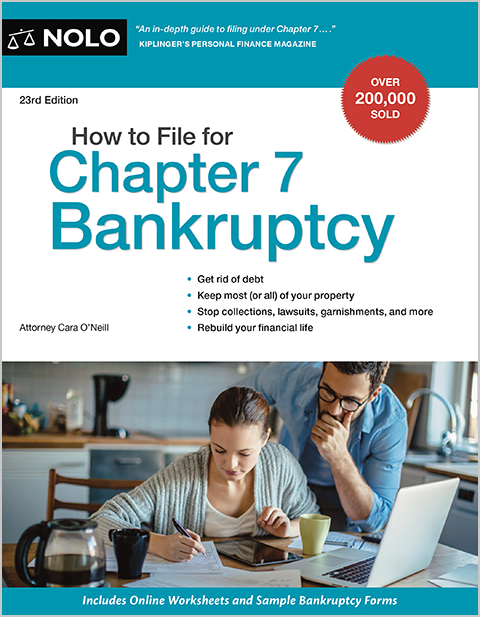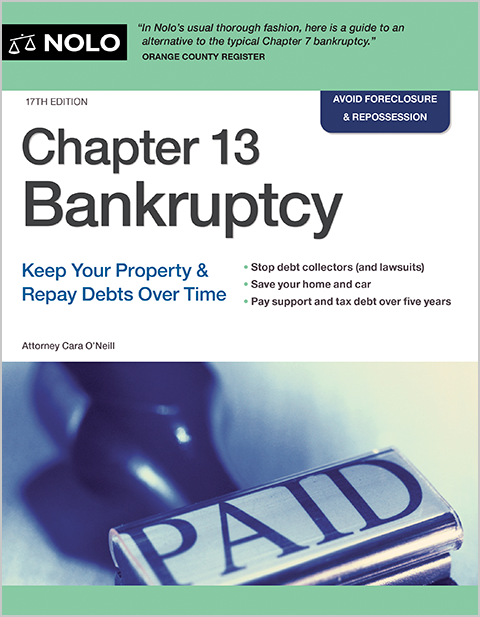How long Chapter 13 lasts depends on your monthly income and how much time you need to make the required plan payments.
The average Chapter 13 lasts three to five years, not to exceed five years. The length of a Chapter 13 bankruptcy depends on the filer's monthly income and the time needed to pay the required Chapter 13 plan amount. For instance, many Chapter 13 filers who qualify for a three-year plan opt to reduce the monthly payment by paying into a five-year plan.
In this article, you'll learn how to calculate how long you must pay in Chapter 13. For more information, read An Overview of Chapter 13 Bankruptcy.
Monthly Income Determines How Many Payment Years in Chapter 13
Filing for bankruptcy under Chapter 13 requires regular income. You must be able to make required plan payments from wages and commissions earned in the ordinary course of a job or through self-employment.
Why does this matter? The commitment period for your plan—or plan duration—is determined by comparing your monthly earnings to the median family income in the state where you live. Here's how it works.
You'll pay into a three-year plan if you earn less than the median income in your state. The plan term increases to five years if you earn more than the state median income. Five years is the maximum length of any Chapter 13 repayment plan.
Each state's median income listings are posted on the U.S. Trustee Program website.
Shortening How Long You'll Pay in Chapter 13
You can reduce the commitment period for your Chapter 13 plan if you can pay all your unsecured debt, like credit card balances, medical bills, and personal loans, sooner. However, most Chapter 13 debtors earn too little and owe too much to make required plan payments in less than five years.
Learn how to pay a Chapter 13 plan early.
You Can Choose a Five-Year Chapter 13 Plan
Even if you qualify for a three-year plan, you might opt for a five-year plan instead. There are several reasons why debtors who could proceed under a 36-month plan would choose this option.
Catch up on arrearages on a home or car loan. Often a Chapter 13 debtor's primary asset is a home or motor vehicle, and many people file bankruptcy after defaulting on a home mortgage or motor vehicle loan. One of the benefits of Chapter 13 that isn't available in Chapter 7 is the ability to bring home mortgage and motor vehicle loans current through the repayment plan. However, many debtors owe too much in arrearages to bring them current in only 36 months. Stretching the payment period to five years allows a filer to pay less each month and have a better chance of getting the plan confirmed.
Keep nonexempt property. One of the advantages of Chapter 13 over Chapter 7 is that you can keep assets that otherwise would have to be turned over to a trustee. Under the best interests test, a Chapter 13 plan can't be confirmed unless it pays unsecured creditors at least as much as they would have received in a Chapter 7 case. In short, you must pay the value of your nonexempt property at a minimum.
Changing a Plan Length When Circumstances Change
Five years is a long time. It's normal for things like job losses and medical issues to happen. If your circumstances change, you can modify your Chapter 13 plan length, with the court's approval.
Short-term financial problems. Debtors facing short-term financial hardships, such as temporary unemployment, can ask the bankruptcy court to approve a plan moratorium. A plan moratorium gives you a break, usually for no longer than 90 days, from having to make plan payments. Regardless of the length of the moratorium, you must still complete all plan payments under your plan within five years of the date that you started making them, so you'll need to increase the monthly amount you pay moving forward.
Many trustees will agree to an informal moratorium of a month or so. Again, you must make up the payment amount plus any interest and fees incurred on the debt. If you don't take care of accruing interest and fees, you might find you owe a hefty amount on a mortgage or car payment at the end of your plan.
Long-term financial setbacks. You can modify your plan to deal with long-term financial issues, such as taking a lower-paying job or picking up the cost of health insurance. One option would be to stretch payments to five years if you initially proposed a shorter term. Other options might include asking for a hardship discharge or converting the case to Chapter 7.
Debt payment problems. In some cases, debtors give up their homes or cars after filing for Chapter 13 because they can't keep up with loan and arrearage payments. Debtors who turn over collateral might be able to modify their plans to shorten the duration if other bankruptcy law requirements are met, but it's more likely the reduced payment amount will be considered "disposable income" and paid to other creditors.
Consult a Bankruptcy Lawyer
Drafting a Chapter 13 plan involves many steps, and most attorneys use a computer program to calculate them. The best way to determine your obligations and options is to consult a knowledgeable bankruptcy attorney.

